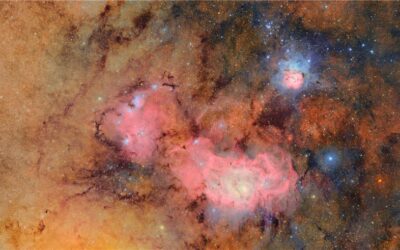New research shows that the growth of K’gari, the world’s largest sand island, was crucial for creating the clear waters that allowed the Great Barrier Reef to flourish.
Australia’s famed Great Barrier Reef is known for being the world’s largest coral reef – overflowing with marine life, it is the only living thing visible from space. Scientists have long sought to understand the conditions that led to the reef’s formation, as conditions seemed suitable long before the reef’s birth. Now, a new study claims the answer might be K’gari, the world’s largest sand island (also known as Frasier Island).
Nick Patton, Ph.D., a postdoctoral researcher now at DRI, teamed up with an international group of researchers from Sweden, New Zealand, Australia, and the United States for the study published Nov. 14 in Nature GeoScience. Their research showed that the sand island formed between 700,000 and 800,000 years ago, and that the reef was only able to establish once the island protected it from the northern flow of sand that naturally occurs in this area.
“The Great Barrier Reef is the world’s largest coral reef ecosystem, yet what I find so interesting is that we still do not really know what caused its initial inception,” says Daniel Ellerton, Ph.D., of Stockholm University and the study’s lead author. “Previous research has highlighted that several mechanisms are likely responsible and here we demonstrate an additional factor that should be considered.”
K’gari juts out like a finger from Australia’s eastern coast below the far southern reach of the Great Barrier Reef. The island itself is a UNESCO World Heritage area, covered with lush rainforest and freshwater dune lakes. It formed as wave action carried sediment north along the coast. As the sediment accumulated, the island formed a barrier that protected the coastal region to the north. Without the island, the coral reef would be covered in this drifting sand.
The timing of the island’s formation is due to a major shift in the Earth’s climate called the Mid-Pleistocene Transition, which saw glacial cycles extend from about 40,000 years to around 100,000. The longer cycle allowed for ice caps to grow larger, decreasing sea levels across the planet.
“Our work highlights how changes in sea-level variability approximately 700,000 years ago directly caused a dramatic reorganization of the coast and the formation of the Great Barrier Reef, as we know it today,” says Patton.
There is evidence that the Great Barrier Reef is around 650,000 years old, supporting the theory that K’gari directed sand away from Australia’s northeastern coast, providing the clear waters needed for coral growth.
To determine the age of K’gari, the researchers used a method called optically stimulated luminescence dating. This method provides an age estimate for the last time that sediments, like quartz sand, were exposed to light.
“These large coastal dune fields have rich geologic and climatic archives that provide important information on Earth’s history,” Patton says.
The research team engaged with the traditional inhabitants of K’gari and the adjacent Cooloola Sand Mass (the Butchulla and Kabi’ Kabi’ peoples, respectively) through an Australian Research Council Discovery Grant to understand the formation and evolution of these systems.
Studies that look back in time don’t only help us understand how ecosystems formed – they can also provide a glimpse into the possible future, the researchers say.
“Sea-level change is something we often hear about in the news, but I did not realize the sheer power of the ocean until working on this project,” Patton says. “As we observe in this study, rising and falling sea-levels have the ability to both create and destroy entire coastlines and ecosystems.”
“This research highlights the complex evolution of coastal environments over long timescales,” Ellerton says. “Coastlines globally are at risk from rising sea-levels under predicted global warming which poses a serious threat. If we are going to manage coasts and coral reefs under climate change scenarios, we need to understand how these complex responses occur.”
More Information:
The full study, Fraser Island and initiation of the Great Barrier Reef linked by Middle Pleistocene sea-level change, is available from Nature Geoscience: https://doi.org/10.1038/s41561-022-01062-6
###
About DRI
The Desert Research Institute (DRI) is a recognized world leader in basic and applied environmental research. Committed to scientific excellence and integrity, DRI faculty, students who work alongside them, and staff have developed scientific knowledge and innovative technologies in research projects around the globe. Since 1959, DRI’s research has advanced scientific knowledge on topics ranging from humans’ impact on the environment to the environment’s impact on humans. DRI’s impactful science and inspiring solutions support Nevada’s diverse economy, provide science-based educational opportunities, and inform policymakers, business leaders, and community members. With campuses in Las Vegas and Reno, DRI serves as the non-profit research arm of the Nevada System of Higher Education. For more information, please visit www.dri.edu.


